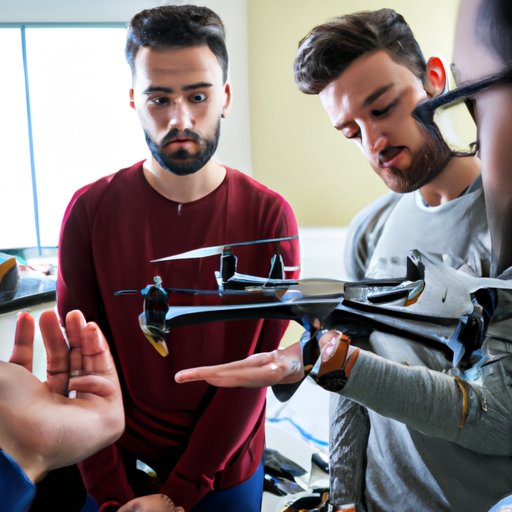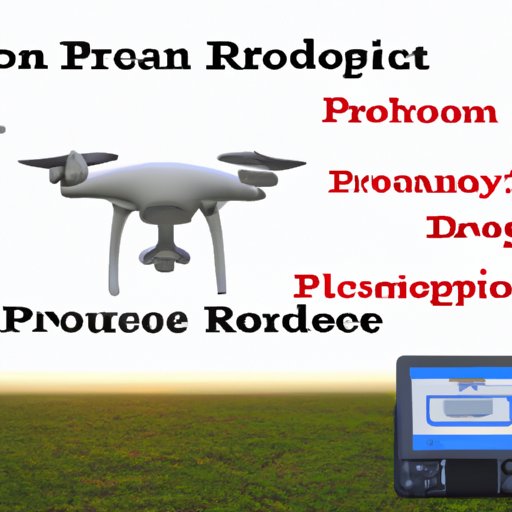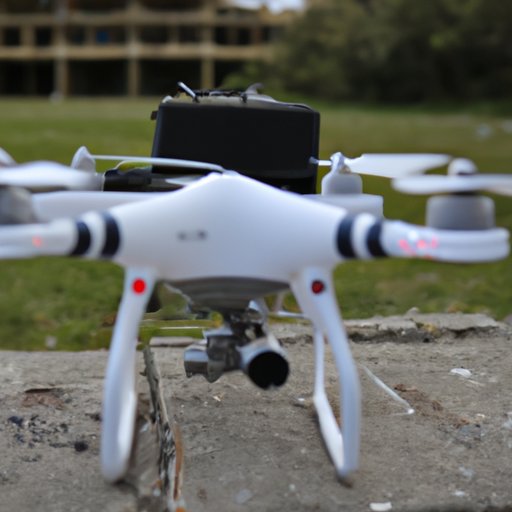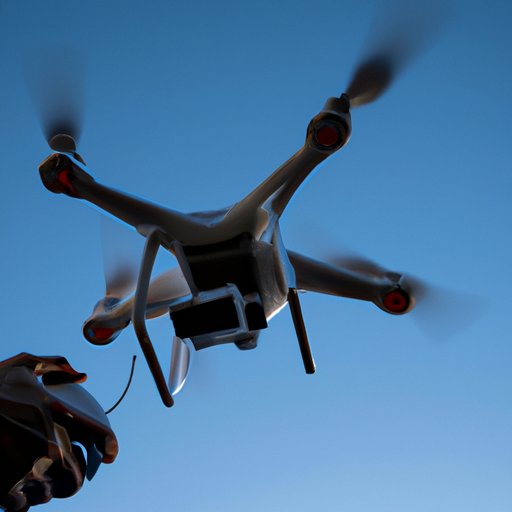Introduction
Drone technology has come a long way since it was first introduced, and today it is being used for a wide range of applications. But what exactly is drone technology? How does it work? And what are some of the potential benefits and uses of this technology? This article aims to answer these questions and provide an in-depth exploration of drone technology, including its benefits, uses, and potential impacts on society.

Explaining the Basics of Drone Technology
To understand drone technology, it’s important to first define what a drone is. According to the U.S. Federal Aviation Administration (FAA), a drone is “an unmanned aircraft system (UAS) that is operated without the direct control of a person on board.” In other words, a drone is an unmanned aerial vehicle (UAV) that can be operated autonomously or remotely by a pilot on the ground.
There are several different types of drones, from small hobbyist models to larger commercial and military models. Hobbyist drones are typically used for recreational purposes and can be operated by anyone with a valid license. Commercial and military drones, on the other hand, are typically much larger and more sophisticated, and are used for a variety of purposes such as surveillance, search and rescue, and cargo delivery.
Drones generally consist of four main components: a power source, a control system, a navigation system, and a payload. The power source can be either a battery pack or an internal combustion engine, while the control system is responsible for controlling the drone’s flight path and speed. The navigation system helps the drone maintain its course and altitude, and the payload is whatever the drone is carrying (e.g. a camera, sensors, etc.).
Examining the Laws & Regulations Surrounding Drone Technology
The use of drones is subject to both international laws and local regulations. On the international level, the International Civil Aviation Organization (ICAO) has established standards and recommended practices for the safe operation of drones. These standards cover topics such as airspace classifications, operating procedures, and airworthiness requirements.
In addition to ICAO standards, countries around the world have their own laws and regulations regarding the use of drones. For example, in the United States, the FAA requires all drone operators to obtain a Remote Pilot Certificate before they can legally operate a drone. Other countries have similar regulations, so it’s important to research the laws and regulations in your country before operating a drone.
At the local level, many cities and towns have their own rules and regulations regarding the use of drones. Some areas may require permits or restrict the areas where drones can be flown. It’s important to familiarize yourself with the local laws and regulations before operating a drone in any area.

Highlighting the Benefits and Possible Uses of Drone Technology
The most obvious benefit of drone technology is the ability to conduct operations in places that would otherwise be inaccessible or dangerous for humans. Drones can be used for a variety of commercial, industrial, and military purposes, such as surveying land, inspecting buildings and infrastructure, delivering packages, and providing emergency response services.
In addition to these practical uses, drones can also be used for recreational purposes. Drone racing and freestyle flying have become increasingly popular in recent years, and drones can also be used to capture stunning aerial footage and photography.

Investigating the Impact of Drone Technology on Society
Like any technology, drone technology has both positive and negative impacts on society. One of the most significant positives is the potential of drones to improve safety and reduce costs. For example, drones can be used to inspect hazardous areas without putting human lives at risk, and they can also help reduce cost by eliminating the need for expensive manned aircraft.
On the other hand, there are also some potential downsides to drone technology. Drones can be used for malicious purposes, such as espionage, and their presence can also lead to privacy concerns. Furthermore, drones can cause noise pollution, which can be disruptive for people living in close proximity to them.
Analyzing the Pros and Cons of Drone Technology
When considering the potential benefits and drawbacks of drone technology, it’s important to weigh the pros and cons carefully. On the one hand, drones have the potential to revolutionize industries such as agriculture, search and rescue, and logistics, and they can also be used for recreational purposes.
On the other hand, drones can pose a threat to privacy and safety, and their use can lead to noise pollution. Furthermore, there are still many legal and technical challenges facing the drone industry, such as the lack of uniform regulations and the difficulty of developing reliable autopilot systems.
Discussing the Future of Drone Technology
Despite the challenges facing the drone industry, there is still great potential for the technology in the future. As drones become more advanced, they will be able to perform more complex tasks such as package delivery and search and rescue operations. Furthermore, autonomous drones could potentially be used for everything from monitoring crops to delivering medical supplies.
However, there are still a number of challenges that must be overcome before these potential applications can be realized, such as the development of reliable autopilot systems and the establishment of uniform regulations across jurisdictions. Nevertheless, the potential of drone technology is undeniable, and it is likely to continue to grow in the coming years.
Conclusion
In conclusion, drone technology has come a long way since its introduction, and it is now being used for a wide range of applications. From commercial and industrial uses to recreational purposes, drones offer numerous benefits and potential uses. However, it is important to consider the potential impact of drones on society, as well as the challenges facing the industry. With further developments and improved laws and regulations, the future of drone technology looks promising.
(Note: Is this article not meeting your expectations? Do you have knowledge or insights to share? Unlock new opportunities and expand your reach by joining our authors team. Click Registration to join us and share your expertise with our readers.)
